The strange 19th-Century sport that was cooler than football
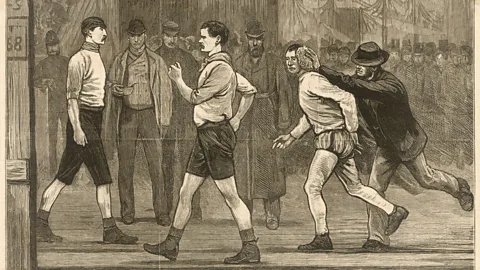 Alamy
AlamyPedestrianism was a sport of epic rivalries, eyewatering salaries, feverish nationalism, eccentric personalities and six-day, 450-mile walks.
The race began, rather unusually, at 1:00 on a Sunday morning.
It was 21 September 1879, and 13 (mostly) moustachioed athletes in tight leggings and tiny shorts had gathered under the towering arches of the original Madison Square Garden in New York – along with 10,000 raucous spectators.
It was the most eagerly anticipated sporting event of the era, steeped in a kind of mania the world had rarely seen before. The contestants were already international celebrities, and arrived with an entourage of their own dieticians, doctors, chefs, dedicated sports masseurs and trainers – who often recommended that they drank champagne as they went.
Earlier in the day, large, jostling crowds had gathered outside the venue and more than 200 people tried to sneak in under the guise of being in the athletes' employment. One woman screamed "Let me in! I'm the chiropodist that takes care of [the contestant Peter] Panchot's feet!", according to an account in the New York Herald. It was rumoured that those who could not afford the $1 entrance fee might break down the doors.
The whole affair was a serious business. There were corporate sponsorships – one athlete present at the match, though not competing, was the spokesperson for a brand of salt. There were snacks, including roasted chestnuts and pickled eggs – and cups of beer, dispensed by communal taps. There was a full military band, lending the arena a certain nationalistic ambiance. Extravagant bets were made. The crowd was littered with flags, reporters and waving handkerchiefs.
This was no football match, tennis tournament, or basketball game – this was a "pedestrianism" contest, in which the public paid to watch people walk. This particular tournament was the fifth Great Six Days Race, set up by the British politician and sporting baron Sir John Astley.
The rules were simple – essentially, contestants were required to walk in circles for six days in a row, until they had completed laps equivalent to at least 450 miles (724km). They could run, amble, stagger or crawl, but they must not leave the oval-shaped sawdust track until the race was over. Instead they ate, drank and napped (and presumably, performed other bodily functions) in little tents at the side, some of which were elaborately furnished.
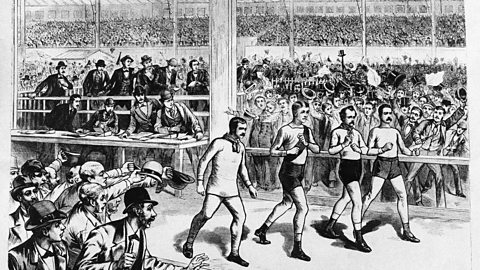 Alamy
AlamyJust like sportsmen today, pedestrians were remunerated with eye-watering sums of money. Whoever travelled the furthest in the time available would win $25,000 (around $679,000 or £494,000 today) and a belt of solid silver, engraved with the words "Long Distance Champion of the World".
Where did this strange sporting craze come from? How were such feats of endurance even biologically possible? And why did it disappear?
A silly bet
Pedestrianism first started as it meant to go on – with a chase and a bet.
It was 1859 and Edward Payson Weston was a skinny 19-year-old copyboy working for the New York Herald – a paper which would cover his career in detail later on. He was meant to collect a box of upmarket flowers from a delivery wagon and send it off as a gift on behalf of his boss, but forgot – the wagon arrived, then left again. To remedy his mistake, he pursued it across the city, eventually catching up around West 70th Street.
You might also like:
Weston's colleagues had followed the whole ordeal with delight, and the next day he was awarded double pay for his heroic efforts. Recognising his feet as a potential goldmine, a year later he wagered with a friend on the outcome of the 1860 presidential election, with the loser agreeing to walk to Washington to see the inauguration. He bet on Abraham Lincoln's rival, the obscure democrat John Breckinridge – so soon he found himself on a 10-day trek that catapulted him to fame overnight.
Eventually he pioneered endurance walks against other people, and the rest is history. The pioneering pedestrian fascinated both doctors and members of the public – he was observed minutely by the former, down to his output of urine and faeces.
As the bizarre sport developed, pedestrianism adopted many of the tropes we're familiar with today.
Celebrity athletes acquired affectionate nicknames – the London-born book-binder-turned-champion William Gale was known as the "Long-winded walker of Cardiff", while Weston himself was "Weston the Pedestrian".
Matthew Algeo, who authored the book Pedestrianism: When Watching People Walk Was America's Favorite Spectator Sport, explains that though watching people walk in circles might sound particularly dry by modern sporting standards, inside the arena matches were colourful and lively. "Weston would play the coronet while he walked, and he always dressed up and wore a cape and a riding crop."
 Getty Images
Getty ImagesEach had their own signature technique – Weston was renowned for his wobble (he was sometimes known as "the Wily Wobbler"), while the famous Daniel O' Leary was known for pumping his arms like pistons and clutching corn on the cobs in each hand, which he claimed helped to absorb the sweat.
"Children would imitate the strides of their favourite pedestrians," says Algeo. Their obsessions were the inspiration for the first trading cards – swappable pictures of the celebrities on cigarette packs. As their fame escalated, the athletes developed familiar egos and diva-like habits. During one race in London, a champion requested that jars of water were brought from the town of Chester, 200 miles (321 km) away, because this is what he had drunk as he was training.
Fierce rivalries sprung up, such as that between O' Leary and the walker John Hughes. When the latter boasted that he would beat O' Leary, if only he could afford to get to Britain, the wealthy champion replied "I'll build you a bridge." (From then onwards Hughes referred to him as "that rapscallion who offered to build me a bridge.")
There were even early doping scandals – in 1876, Weston was found to be chewing coca leaves while he walked. The use of this natural product as a stimulant is ancient, pre-dating the Incan civilisation in South America, where it was used by local people to relieve fatigue and hunger. Though illegal in many countries to this day due to its addictive qualities, at the time chewing coca wasn't strictly breaking the law – just unsportsmanlike. Weston's excuse has remained a classic: he was prescribed it by his doctor.
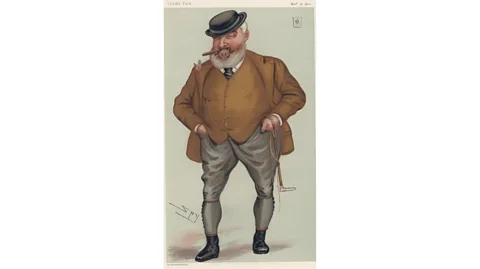 Alamy
Alamy"Pedestrianism was extremely popular for a couple reasons," says Algeo. "You have to remember that industrialisation is rapidly occurring, people are moving into the cities and working in the factories – they're working overnight and early morning shifts, and because it was a continuous event occurring for six days, it was always open." Workers could clock off work at 7:00 and then join the boisterous crowds at pedestrian matches for very little money.
A ‘tarnished victory’
Back at the fifth Great Six Days Race, the pedestrians began to emerge from their tents and arrange themselves on the track. They hailed from as far away as England and the southeast Baltic (then Prussia), and their condition was scrutinised in minute detail by the audience, who discussed them as one might a horse. Some thought Charles Rowell's physique was "too fine" – he looked thin and had evidently done too much training, they said. Others speculated about Panchot and George Hazael's feet, which had previously been injured. In New York, John Ennis was the favourite, while Boston had high hopes for its own athlete Frank Hart – who later became one of America's first black sports stars.
After much handshaking and removing of coats, the men were ready. The starting signal sounded and they were off – while cheers from the crowd literally shook the building. Hazael was the first to complete a lap, and maintained his lead for the first 12. Each time the contestants approached the further end of the pitch, the spectators swarmed to that side, crushing each other and almost breaking the barrier at the front.
Twenty four hours later, Rowell had amassed a lead – and won a large bonus and various silver trinkets. By 36 hours in, he had broken a record. Merritt, Hazael, Hart and Guyon jostled for second place around 30 miles (48km) behind him, while Weston was accused of "absurd antics and idiotic grimaces" by furious fans, after taking an eight-hour break. Over the coming days, contestants gradually dropped out and it started to look like Rowell's victory was secure. Then on Friday morning, he was abruptly struck down with fatigue. He spent six hours in his tent and finally emerged "in convulsions", much to the alarm of the crowd – particularly those who had bet on him.
However, Rowell rebounded, even joining in with a run that lasted into the night. On the final day of the race, he reached his 500th mile, and eventually added another 30 to this total. Then he abruptly retired to his tent, more than two hours before the allotted time was up, secure in his position.
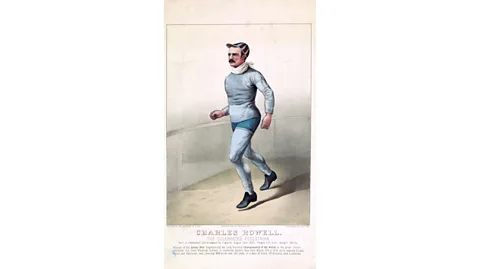 Alamy
AlamyThe race continued, and as the last crucial moments approached, the crowd turned into a mob, elbowing their way onto the pitch. It all ended just before 22:00, with Rowell the victor, followed by Hazael and Hart. Bouquets of flowers rained down upon them, and the event was front-page news the next day.
Oddly, the champion was roundly criticised. Many fans had made lunchtime bets that he would make 531 miles (855km) or even 535 (861km) – had he continued for another hour, he might have saved them from losing devastating sums of money. The New York paper The Sun went so far as to say he "tarnished" his triumph.
An evolutionary advantage
The Great Six Days Race has since been surpassed by a number of modern endurance events, such as the gruelling 52-day Self-Transcendence 3,100 Mile Race, which requires contestants to walk 60 miles each day in order to make the target.
But how are such feats of stamina even biologically possible? One hotly debated theory is that it's down to our early evolutionary history. "Persistence hunting" involves chasing large prey animals for hours or days, until they collapse from exhaustion and can be easily killed. Some hunter-gatherer peoples use the technique to this day, such as the San tribe, who have territories across southern Africa.
The benefits of persistence hunting are thought to hinge on a quirk of human biology. As hairless, sweaty apes, we may have an advantage over furry ungulates such as deer, which don’t have the same ability to use evaporation to dissipate heat – and therefore might overheat more quickly over long distances.
As it happens, the question of who has superior endurance, man or beast, has been a fascination for centuries. It was first posed by pedestrians – and as ever, it started with a bet.
In 1818, the English athlete J Barnett wagered that he could beat a horse in a 48-hour race. The horse won by 179 miles (288km) to 158 (254km), though it was carrying 168 pounds (76kg). However, since it was a short race, this was not considered a definitive defeat. Guyon was next to attempt it, over 60 years later – again he was thwarted, losing by 50 miles (80km) over 52 hours (he blamed the cold air).
But what about one of the famous six-day races? After an unsuccessful first try, in 1880 15 men and five horses took to a track in Chicago for the grand showdown. In front of a packed-out crowd, the horses initially decimated their two-legged adversaries – by the second day, one horse had achieved 220 miles (354km) to man's 195 (313km). Then something unexpected happened.
 Alamy
AlamyOn the fifth day, the leading horse – a black mare known as Betsy Baker – stopped responding to the whip, and retired for two hours. She was apparently exhausted, and nothing could induce her to continue except champagne. New Yorker Michael Byrne won, with 578 miles to her 563.
Races between men and horses remain a fixation to this day, and last year a team of scientists decided to find out what was really going on. They analysed the results of three annual man-against-horse races and compared them to the conditions on the day. They found that the speed horses run at deteriorates faster when it's hot, compared with humans – which the authors suggest hints that we might be adapted for endurance running in high temperatures.
Meanwhile an earlier study found that endurance athletes who successfully completed such events in hot temperatures tended to have longer legs, which could be interpreted as evidence that the leggy body shape of modern humans evolved due to the selective advantage they provided during regular periods of prolonged exertion.
An abrupt decline
Whether we're adapted to it or not, pedestrianism only enjoyed a brief moment of limelight.
By March 1881, interest in this strange sport had fallen off a cliff. It was the final days of the O' Leary Belt – a rival six-day competition set up by the athlete Daniel O'Leary, who apparently decided this was a better use of his fabulous riches than building his rival a bridge. Reporting from the scene, the New York Times described "six miserable wretches" toiling wearily around the track, in front of a meagre crowd "not sufficient, either in numbers or enthusiasm, to encourage the six men".
When the celebrity pedestrians Hughes and Hart had retired, public interest had vanished overnight. The venue was almost empty during the day, and at night, the audience was less than 10% of what it had once been. The newspaper concluded: "This fact points to an inevitable conclusion, that the people are at length awakening to the fact that walking matches, if they are not hippodromes [circuses] in the worst sense of the word, are brutal exhibitions at best, and ought not to be tolerated in a civilised community.”
The shameful realities the reporter was referring to had always been the sport's dark secret. While it might sound wholesome to go for a six-day stroll, pedestrianism was more of a spectacle of pain and delirium than athletic prowess. With no or little sleep, an excess of champagne and frequent injuries, elite pedestrians routinely spent half the race staggering round the pitch.
"It was horrible, but it was entertaining to people at the time," says Algeo.
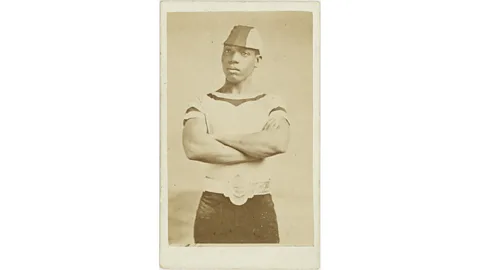 Wikimedia Commons
Wikimedia CommonsDerek Martin, a doctoral student studying pedestrianism at Manchester Metropolitan University, compares it to the craze for dancing competitions that swept America during the Great Depression. "The idea was that couples would dance and the winner was the last one on their feet – I'd say there was a little bit of human cruelty there watching people take themselves to the ultimate of endurance."
The final blow was the invention of the bicycle. "Suddenly, all these places where you had six-day walking matches, you can now have six to eight-day bicycle races," says Algeo. The thirst for watching people hurt themselves was still there, but "the crashes were a little bit more spectacular at 20 miles an hour than they were at three miles," he says.
Pedestrianism did not disappear altogether, of course. Eventually the sport evolved into something more palatable to the public, and less likely to kill the contestants: racewalking. Like its ancestor, this newer pursuit involves walking a set distance as quickly as possible – usually a more reasonable 20km (12 miles, women's Olympic distance) or 50km (31 miles, men's distance). To distinguish it from running, one foot must always be on the ground at any given time.
And perhaps it's too early to say for sure that pedestrianism is gone forever. "These endurance events have come and gone throughout history," says Martin.
Take the Olympic Marathon, first launched as a brand new sport in 1896. It was inspired by the ancient Greek legend of the messenger Pheidippides, who ran from the town of Marathon to Athens, and added a sense of continuity – though no race in the classical version of the games had been longer than three miles (5km).
After an initial frenzy of interest, for decades, the sport was mostly confined to this event. It wasn't until the 1970s and 80s that public competitions sprung up, and it amassed a global following. "No one had thought an ordinary person could run a marathon," says Martin. "And of course now you get pestered by people at work – "Can you sponsor me?", "I'm running in Paris next year", all this sort of nonsense," he says.
Zaria Gorvett is a senior journalist for BBC Future and tweets @ZariaGorvett
--
If you liked this story, sign up for the weekly bbc.com features newsletter, called “The Essential List”. A handpicked selection of stories from BBC Future, Culture, Worklife, and Travel, delivered to your inbox every Friday.
